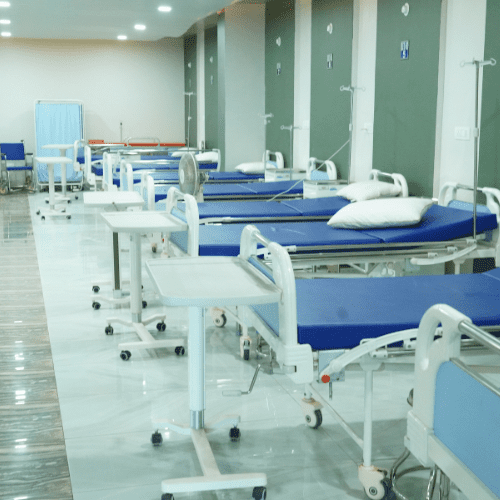Uttar Pradesh, with its vast population and diverse socio-economic landscape, faces significant challenges in healthcare infrastructure. The region exhibits pronounced disparities in access to medical services, particularly between urban and rural areas. Addressing these gaps is essential not only for improving health outcomes but also for fostering overall socio-economic development. This article discusses the current state of healthcare infrastructure in Uttar Pradesh, identifies key challenges, and explores the strategic state schemes designed to bridge these gaps effectively.
Evaluating the Current State of Healthcare Infrastructure in Uttar Pradesh: Identifying Key Gaps and Challenges
The healthcare landscape in Uttar Pradesh reflects a mixture of progress and persistent challenges. Despite increased funding and policy focus, the state continues to experience notable deficiencies in healthcare facilities. Urban regions generally possess better access to hospitals and clinics, while rural areas often face a stark shortage of medical services. This discrepancy leads to significant health disparities, as rural populations must travel long distances to receive basic healthcare, frequently resulting in delayed treatment and poorer health outcomes.
Inadequate infrastructure is compounded by a shortage of qualified healthcare professionals, which directly affects patient care quality. Many healthcare centers in rural areas operate with minimal staff, leading to overwhelmed facilities and diminished service levels. Furthermore, there is often a lack of specialization, which means that patients requiring specific treatments must seek care elsewhere, increasing the burden of travel and associated costs. The overall environment is further challenged by limited access to essential medical resources, including medications and diagnostic tools, which undermines the effectiveness of existing healthcare services.
Socio-economic factors also play a significant role in healthcare accessibility in Uttar Pradesh. High levels of poverty, low literacy rates, and cultural barriers contribute to an underutilization of available services. Many residents remain unaware of the healthcare options at their disposal, exacerbating the issues of access and equity. Additionally, prevailing health beliefs and attitudes can discourage individuals from seeking medical help until their conditions become critical. Understanding these socio-economic dynamics is vital for developing effective interventions that will address the systemic issues affecting healthcare delivery in the region.
Developing and Implementing State Schemes: Strategic Approaches to Bridge Healthcare Gaps in Uttar Pradesh
In light of the pressing healthcare challenges, the Government of Uttar Pradesh has initiated several state-sponsored schemes aimed at improving healthcare infrastructure and service delivery. These schemes are designed with a multi-pronged approach, focusing on building new healthcare facilities, enhancing existing resources, and increasing the number of trained healthcare professionals. For instance, the establishment of new primary health centers in remote areas is intended to ensure that even the most underserved populations have access to basic healthcare services.
The government has also recognized the potential of technology in bridging healthcare gaps. The expansion of telemedicine services enables residents in rural areas to consult with specialists without the necessity of travel. This is particularly crucial for patients with chronic conditions or those requiring follow-up care. Additionally, initiatives focusing on mobile health applications are facilitating better patient engagement, allowing individuals to manage their health proactively and stay informed about available healthcare resources. Such technological advancements are essential for modernizing service delivery and enhancing overall patient outcomes.
Furthermore, to ensure the sustainability of these improvements, the state has prioritized community engagement and public awareness campaigns. Educating residents about preventive healthcare, available services, and lifestyle choices is essential for maximizing the impact of infrastructural enhancements. By actively involving communities in health initiatives, the government is fostering a culture of health awareness and encouraging individuals to take advantage of the resources available to them. Through these comprehensive strategies, Uttar Pradesh aims not only to address existing healthcare gaps but also to build a resilient healthcare system capable of meeting future challenges.
As Uttar Pradesh continues to navigate its healthcare challenges, the strategic implementation of state-sponsored schemes offers a pathway toward a more equitable and effective healthcare system. By addressing both infrastructural deficiencies and socio-economic barriers, the government is making concerted efforts to improve healthcare access for all residents. The combined focus on technological advancements, community engagement, and workforce training will be crucial in transforming the healthcare landscape. Ultimately, these initiatives hold the promise of fostering a healthier population, which is essential for the overall development of the state.




